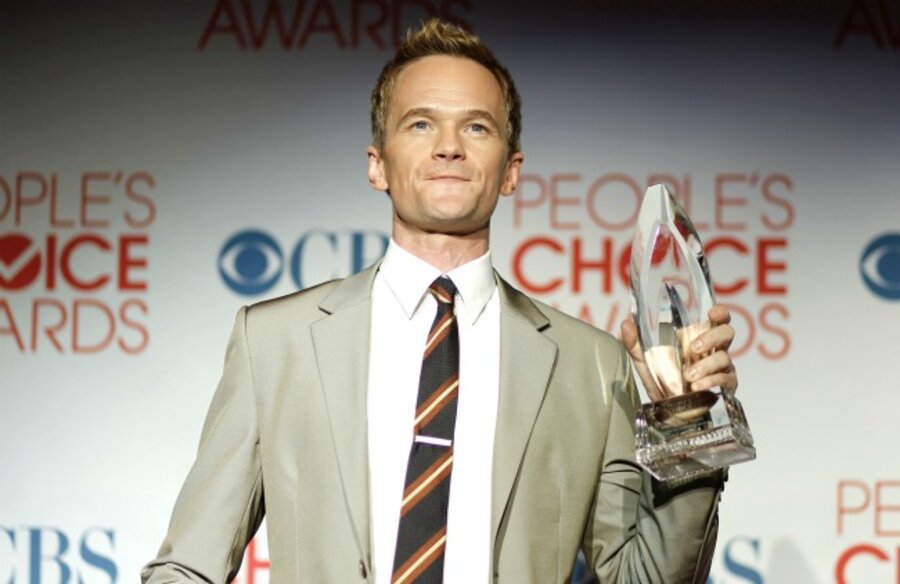Not so Modern Family: Top sitcoms make for sexist, inaccurate television
Loading...
| Los Angeles
The unemployment rate for women characters on network sitcoms is staggering. In the five highest rated primetime sitcoms – The Big Bang Theory, Modern Family, Two Broke Girls, Two and a Half Men, and How I Met Your Mother – the majority of the male characters are professionally accomplished, while the female characters are almost all unemployed or financially struggling.
There is a difference between quirky, flawed characters and ones who are incapable of professional success. And when the latter is reliably female, it makes for sexist television. It also makes for unrealistic television.
Take a look: The female characters on Modern Family are stay-at-home moms; Robin, on How I Met Your Mother, is a struggling journalist (and Lily, the other female character, is a shopaholic nursery school teacher); Two Broke Girls is about model-pretty waitresses who can barely pay their rent; and in the dystopic world of Two and a Half Men, all of the female characters are stalkers, dimwits, cleaning ladies, vindictive ex-wives, or manipulative mothers.
The only accomplished women on any of these shows are on The Big Bang Theory. But like 30 Rock’s Liz Lemon, the most successful one, Amy, is undatable, while Penny, the hot waitress, is the one the male characters lust after.
The male characters on these shows are not just employed (and attractive to women), but most of them are wildly successful. Ted, on How I Met Your Mother, is the youngest architect to ever build a New York skyscraper, Barney is a powerful executive, and Marshall is a corporate lawyer. Mitchell, on Modern Family, is a lawyer, Jay owns a construction company, and Phil is a real estate broker. Alan, on Two and a Half Men, is a chiropractor, Charlie was a jingle writer, and their newest addition, Walden, is a self-made billionaire. And all of the men on The Big Bang Theory are brilliant physicists and engineers.
The male characters on these shows are far from perfect. They have their quirks and shortcomings, just as the female characters do. And as Modern Family’s gay Mitchell and Cameron illustrate, they’re not even conventional. But it’s a given that the male characters can hold down jobs, whereas for the female characters it is a constant struggle, except for Amy, who is borderline asexual.
Not only is this portrayal of women sexist – it’s inaccurate. The US unemployment rate for women (8.3 percent) is lower than it is for men (9.3 percent). According to the Department of Labor, 59 percent of women, or 72 million women work, and women make up half of the US workforce.
And women in the labor force is hardly a recent phenomenon. Prime time sitcoms used to feature smart, sexy female characters that rocked their full time jobs. Characters like Mary Tyler Moore, Claire Huxstable, Julia Sugarbaker, and Murphy Brown. I wanted to be all of those women. So why has television moved backward?
Perhaps it is because the writers are increasingly male. In fact, the number of women working as both actresses in prime-time shows and writers and producers behind the scenes on those same shows fell in 2010-2011, according to a recent report by the Center for the Study of Women in Television and Film at San Diego State University.
Just 1 in 6 writers on prime-time sitcoms, dramas, and reality TV shows are women, down from roughly 1 in 3 in the 2009-10 season. Without women involved in the writing, even the few female characters who do make it into the scripts may be less likely to come across as relatable.
American viewers, especially young women, need strong female role models. They need characters who are employed and successful, and they’re obviously not getting then from primetime sitcoms.
But there’s also a bottom-line issue here: Women oversee 80 percent, or about $5 trillion annually, of consumer spending. A show with relatable female characters is likely to draw an audience of employed female viewers, with money to spend and power to spend it – an ideal market for advertisers. Without such characters in TV shows, networks could risk losing female viewers – and the advertisers who target them.
One to way get more relatable female characters in sitcoms is to ensure that there are more women involved in sitcom writing and execution. Viewers can help accomplish this by appealing to the TV networks directly. All of the networks have contact pages on their websites and Facebook pages that anyone can comment on, in addition to Twitter accounts. There’s also the People’s Choice Awards. You can vote directly for your favorite movies, TV shows, and music on peopleschoice.com as often as you’d like.
SexyorSexism.org encourages voting for Up All Night, a show with more actresses and women writers than men – and which portrays strong female characters, gainfully employed in high-powered careers.
Kevin Reilly, the president of Fox Entertainment, has said the number of comedies on the air next year may increase by 25 percent. We need to make sure that those shows are more representative of working women in America, not less. I love Modern Family. I want to simply enjoy it. But in 2012, I can’t get behind a “modern family” where a woman’s place is only in the home.
Michelle Haimoff’s first novel, “These Days Are Ours,” will be available in bookstores nationwide next month. The female characters in it are strong, funny, and care very much about their careers.





